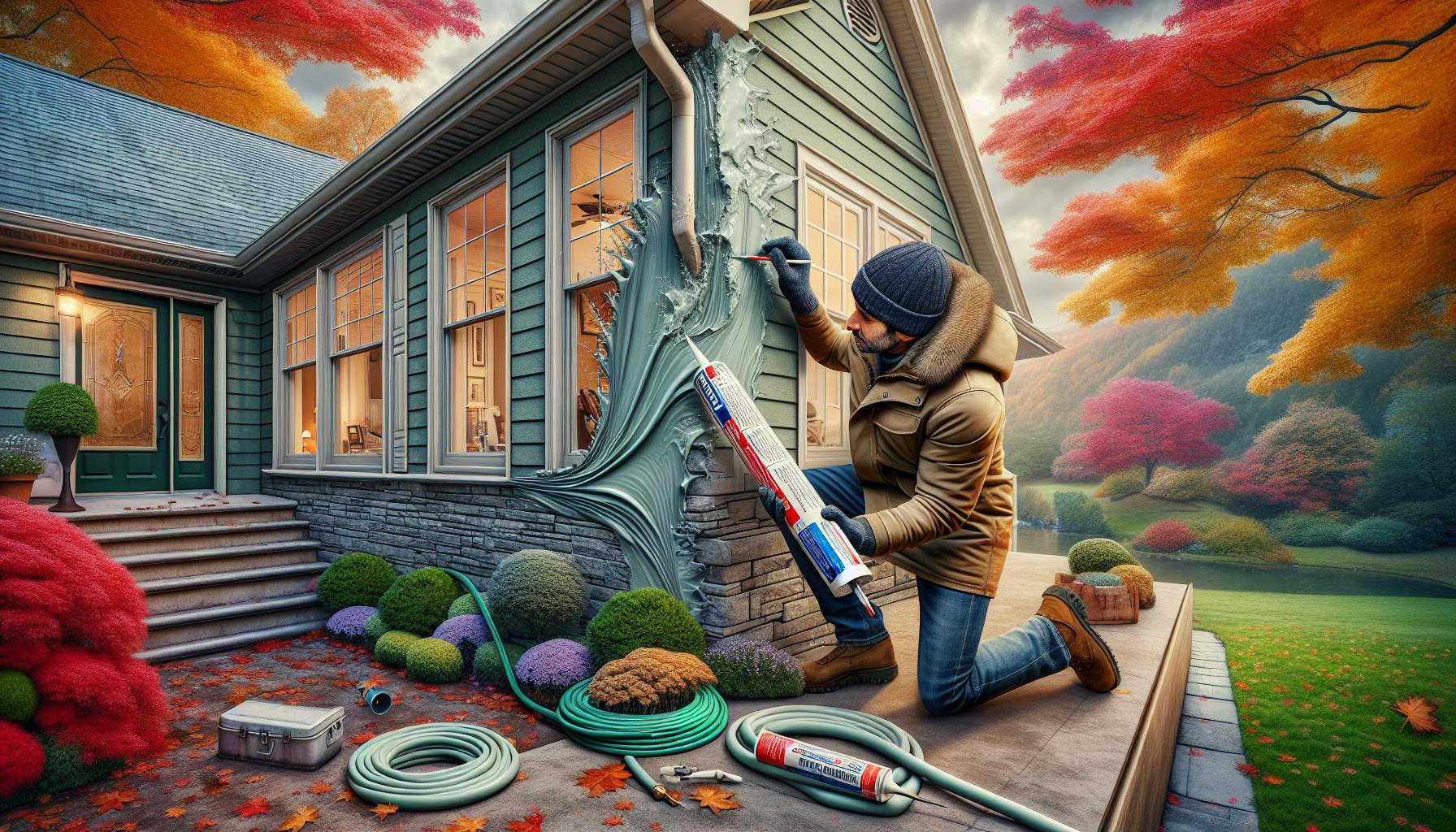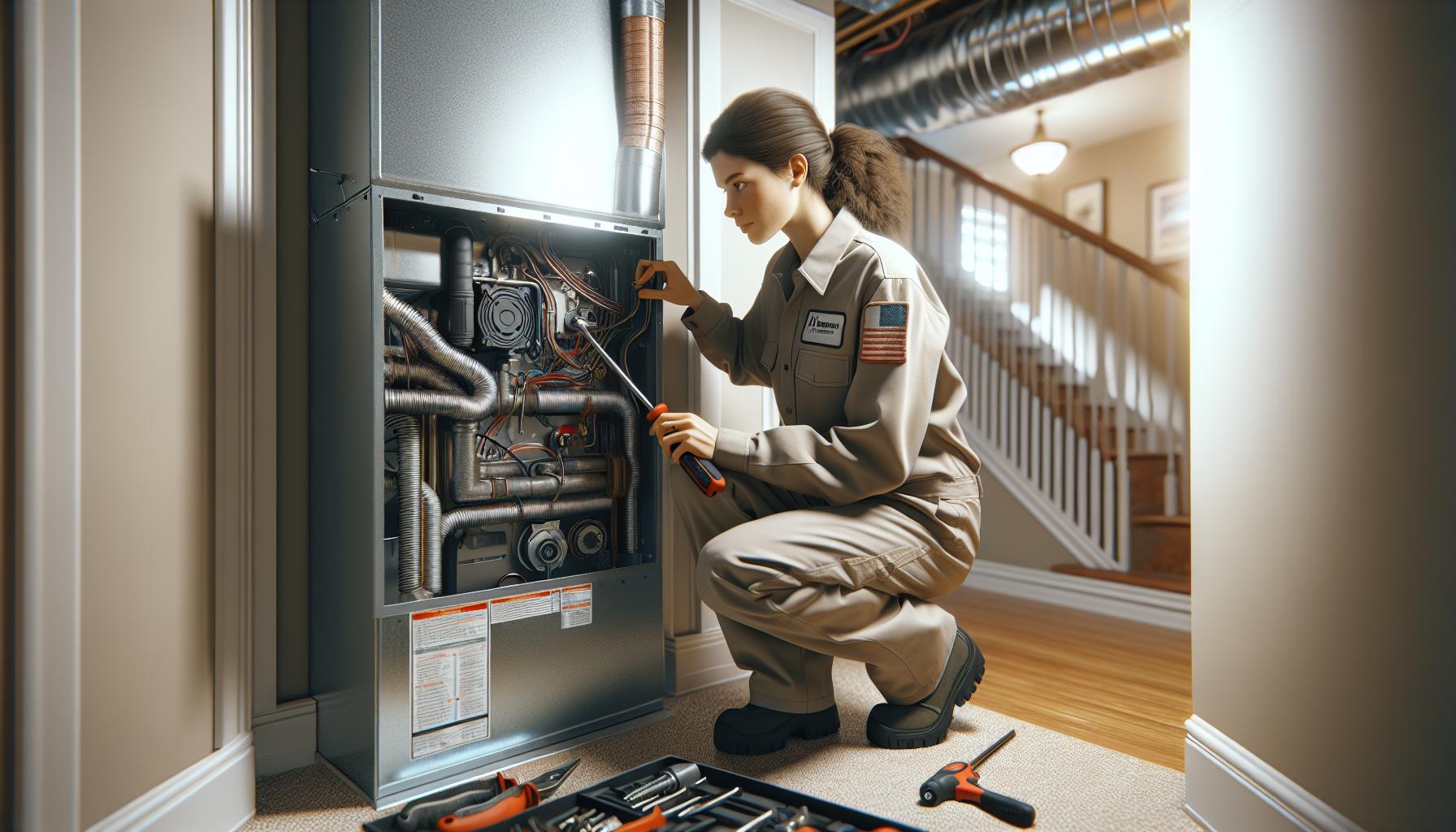As a homeowner I know how crucial it is to prepare your house for the upcoming winter months. Fall maintenance isn’t just about raking leaves – it’s about protecting your biggest investment and ensuring your family stays comfortable during the cold season ahead.
I’ve learned through years of experience that tackling essential maintenance tasks during autumn can prevent costly repairs and save money on energy bills. From cleaning gutters to checking your heating system there’s a comprehensive checklist of items that need attention before the temperature drops. These preventive measures will not only extend your home’s lifespan but also give you peace of mind when winter storms arrive.
Key Takeaways
- Regular fall maintenance tasks like gutter cleaning, roof inspections, and exterior sealing can prevent costly winter repairs and improve energy efficiency
- HVAC system preparation, including professional furnace inspection and air filter maintenance, ensures reliable heating performance and reduced energy costs during cold months
- Proper exterior winterization includes sealing windows/doors, protecting outdoor plumbing, and addressing vulnerable areas that could allow cold air infiltration
- Fall yard maintenance involves strategic tree pruning, leaf removal, and lawn care tasks that protect landscaping investments and prepare outdoor spaces for winter
- Indoor maintenance focuses on fireplace/chimney safety and proper insulation to maintain comfort and energy efficiency throughout the cold season
- Preventive maintenance in autumn not only extends your home’s lifespan but also provides peace of mind before winter weather arrives
Essential Fall Home Maintenance Tasks
I’ve identified the critical maintenance tasks that protect homes during fall and prepare them for winter’s harsh conditions. Here are the detailed steps for each essential task.
Gutter and Downspout Cleaning
Gutters demand immediate attention when leaves start falling. I remove leaves, twigs, and debris from gutters using a sturdy ladder and reliable safety equipment. Here’s my proven process:
- Clear debris by hand, working in 4-foot sections
- Flush remaining material with a garden hose
- Check downspouts for clogs using water flow tests
- Install gutter guards in areas with heavy leaf accumulation
- Look for loose gutter sections or damaged fasteners
- Clean surrounding areas to prevent debris re-entry
Roof Inspection and Repairs
A thorough roof inspection reveals potential problems before winter arrives. I examine these specific areas:
- Missing or damaged shingles from summer storms
- Flashing around chimneys, vents, and skylights
- Signs of moss or algae growth on roofing materials
- Warped or buckling sections indicating structural issues
- Damaged seals around roof penetrations
- Sagging areas that might collect ice or snow
| Issue | Required Action | Average Cost |
|---|---|---|
| Missing Shingles | Replace individual shingles | $30-50 per shingle |
| Flashing Leaks | Reseal or replace flashing | $200-500 per area |
| Moss Growth | Apply moss killer treatment | $100-300 per application |
| Damaged Vents | Replace vent boots or covers | $150-400 per vent |
Winterizing Your Home’s Exterior

Exterior winterization prevents cold air infiltration through vulnerable points in your home’s structure. Here’s my proven approach to protecting your home’s exterior components from winter damage.
Sealing Windows and Doors
I’ve found that proper window and door sealing reduces heating costs by 15-30% during winter months. Here’s what I do:
- Replace worn weatherstripping around door frames using V-strip vinyl or foam tape
- Apply fresh caulk to seal gaps between window frames and exterior walls
- Install storm windows over single-pane windows for added insulation
- Add door sweeps to eliminate drafts under exterior doors
- Check window locks and handles for smooth operation
| Window/Door Area | Recommended Sealant Type | Average Cost |
|---|---|---|
| Window frames | Silicone caulk | $8-15/tube |
| Door frames | Foam weatherstripping | $5-12/roll |
| Door bottoms | Door sweep | $10-25/unit |
- Drain all outdoor faucets completely
- Remove garden hoses from spigots
- Install foam covers on exterior faucets
- Shut off water supply to outdoor fixtures
- Drain sprinkler systems using compressed air
- Insulate exposed pipes in unheated areas with foam sleeves
| Protection Method | Application Area | Material Cost |
|---|---|---|
| Foam covers | Outdoor faucets | $3-8/cover |
| Pipe insulation | Exposed pipes | $2-5/6ft |
| Compression fitting | Drain valves | $5-15/unit |
HVAC System Preparation

A well-maintained HVAC system ensures optimal heating performance during winter months while reducing energy costs. Based on my experience maintaining HVAC systems, these specific maintenance tasks prevent system failures during cold weather.
Furnace Maintenance
Annual furnace inspection detects potential issues before they become major problems. I schedule professional HVAC technicians in early fall to:
- Clean burners to remove rust debris soot
- Test safety controls including limit switches thermostat
- Inspect heat exchanger for cracks wear
- Lubricate moving parts bearings motors
- Check electrical connections tighten loose wires
- Calibrate thermostat settings accuracy
| Maintenance Task | Average Cost | Frequency |
|---|---|---|
| Professional Inspection | $80-150 | Annual |
| Burner Cleaning | $50-100 | Annual |
| Parts Lubrication | $30-50 | Annual |
- Replace disposable filters every 60-90 days
- Clean washable filters monthly with warm water
- Install MERV 8-11 rated filters for optimal filtration
- Check filter condition monthly during peak usage
- Mark replacement dates on filter frame
- Keep spare filters readily available
| Filter Type | Cost Range | Replacement Interval |
|---|---|---|
| Disposable Fiberglass | $5-15 | 60 days |
| Pleated | $10-30 | 90 days |
| Washable | $20-50 | Clean monthly |
| HEPA | $50-100 | 6-12 months |
Yard and Garden Cleanup

Fall yard maintenance protects landscape investments by preparing outdoor spaces for winter dormancy. I’ve developed specific strategies for each area of yard maintenance based on extensive experience maintaining properties in various climate zones.
Tree and Shrub Care
Proper tree and shrub maintenance in fall creates healthier spring growth. Here’s my systematic approach:
- Prune dead branches 3+ inches in diameter to prevent winter storm damage
- Remove crossing branches that rub against each other
- Cut back shrubs by 25% to promote dense spring growth
- Clean debris from tree bases to prevent pest infestations
- Apply 2-3 inches of mulch around trees leaving 6 inches clear from trunks
- Water deeply 1-2 times monthly until ground freezes
- Rake leaves weekly to prevent moisture buildup
- Mow grass to 2.5 inches height for final cut
- Apply winterizer fertilizer with NPK ratio 24-4-12
- Aerate compacted soil areas with 2-3 inch deep cores
- Overseed bare patches using 4-6 pounds of seed per 1000 sq ft
- Remove thatch layers exceeding 0.5 inches thick
| Task | Timing | Coverage Rate |
|---|---|---|
| Fertilizing | 6-8 weeks before frost | 1 lb N per 1000 sq ft |
| Overseeding | When soil temp is 50-65°F | 4-6 lbs per 1000 sq ft |
| Aeration | When soil is moist | 20-40 holes per sq ft |
Indoor Maintenance Tasks
Indoor maintenance serves as a critical component of fall home preparation, focusing on systems that maintain comfort through winter months. These tasks protect interior spaces from cold drafts while optimizing heating efficiency.
Fireplace and Chimney Safety
I inspect chimneys each fall for creosote buildup, cracks in the flue liner, and loose or damaged bricks. A certified chimney sweep removes hazardous creosote deposits exceeding 1/8 inch thickness. The inspection includes checking the damper operation, chimney cap condition, and ensuring proper draft functionality.
| Fireplace Component | Inspection Point | Maintenance Interval |
|---|---|---|
| Chimney Flue | Creosote levels | Annual cleaning |
| Masonry | Cracks/loose bricks | Twice yearly |
| Chimney Cap | Damage/obstruction | Every 6 months |
| Damper | Operation/seal | Every 3 months |
- Measure attic insulation depth (minimum 10-14 inches for fiberglass batts)
- Inspect vapor barriers for tears or gaps
- Check wall insulation using thermal imaging
- Examine rim joists for proper sealing
- Verify ventilation paths remain unobstructed
| Location | Recommended R-Value | Average Cost/Sq Ft |
|---|---|---|
| Attic | R-38 to R-60 | $1.50-$3.50 |
| Walls | R-13 to R-21 | $2.00-$4.00 |
| Crawl Space | R-13 to R-19 | $1.75-$3.25 |
Conclusion
Taking care of your home during fall isn’t just about maintenance – it’s about protecting your investment and ensuring your family’s comfort through the winter months. I’ve learned that spending a few weekends on these essential tasks can save thousands in potential repairs while keeping energy bills manageable.
Remember that each home is unique and may require different levels of attention. I recommend creating a personalized checklist based on your home’s specific needs and tackling the most critical tasks first. The effort you put into fall maintenance now will reward you with a cozy worry-free winter ahead.

